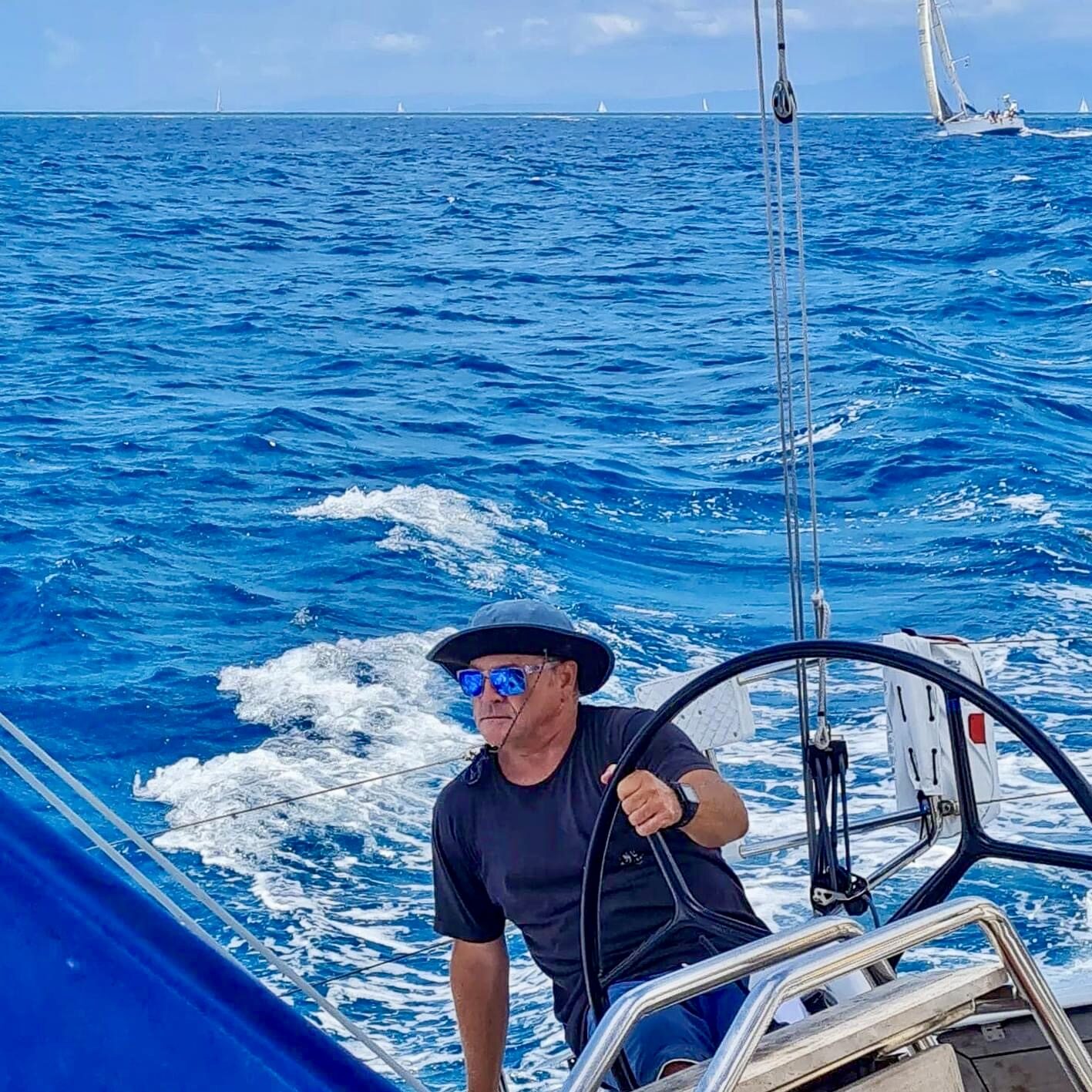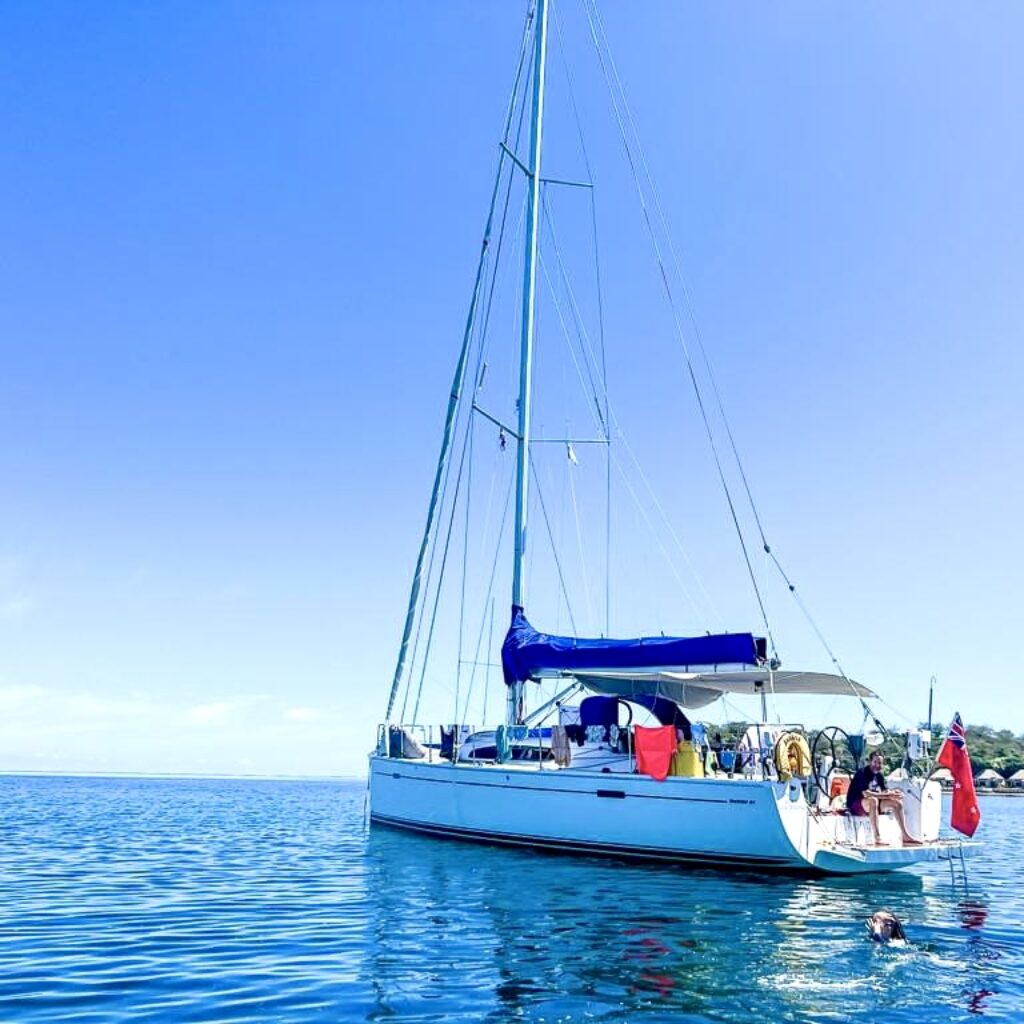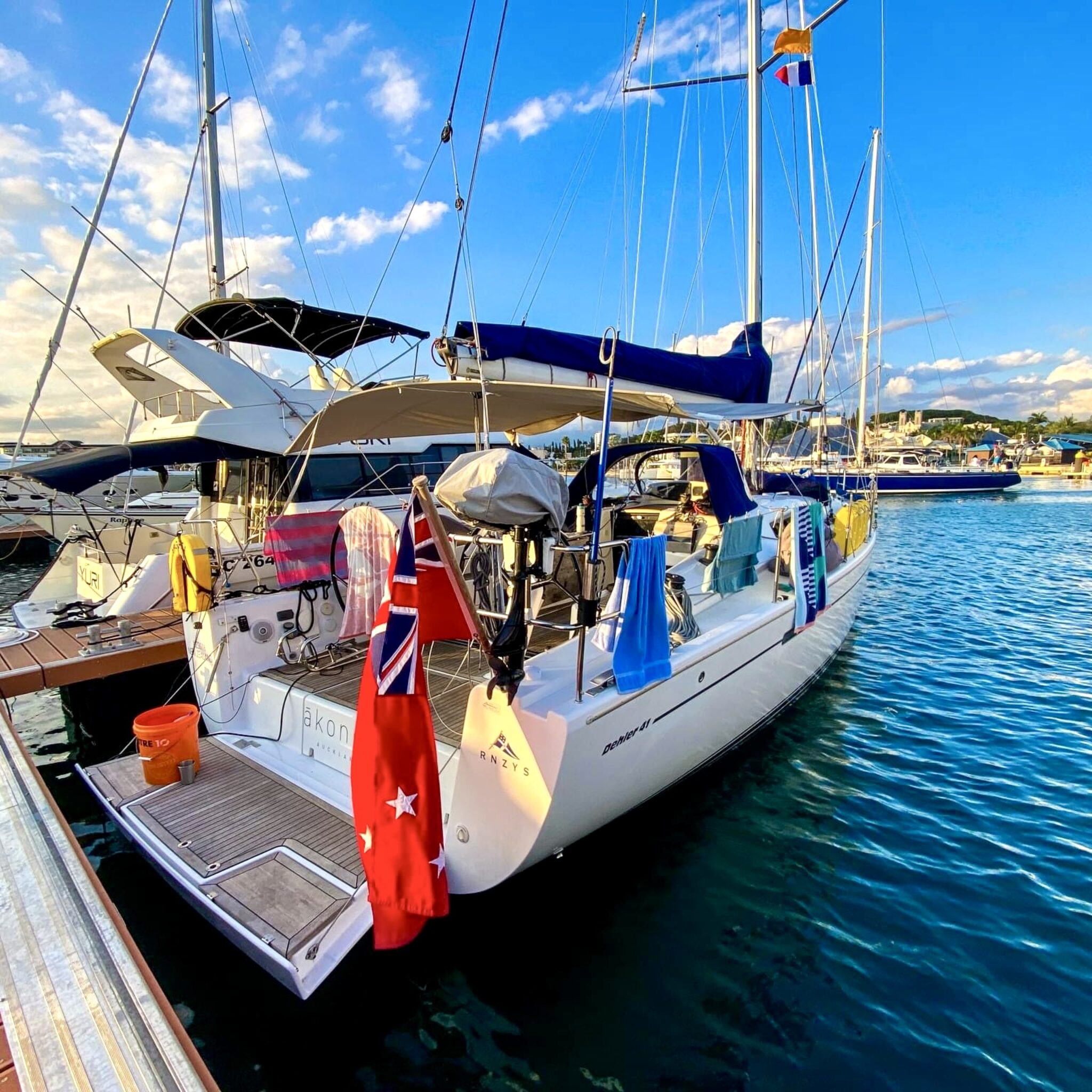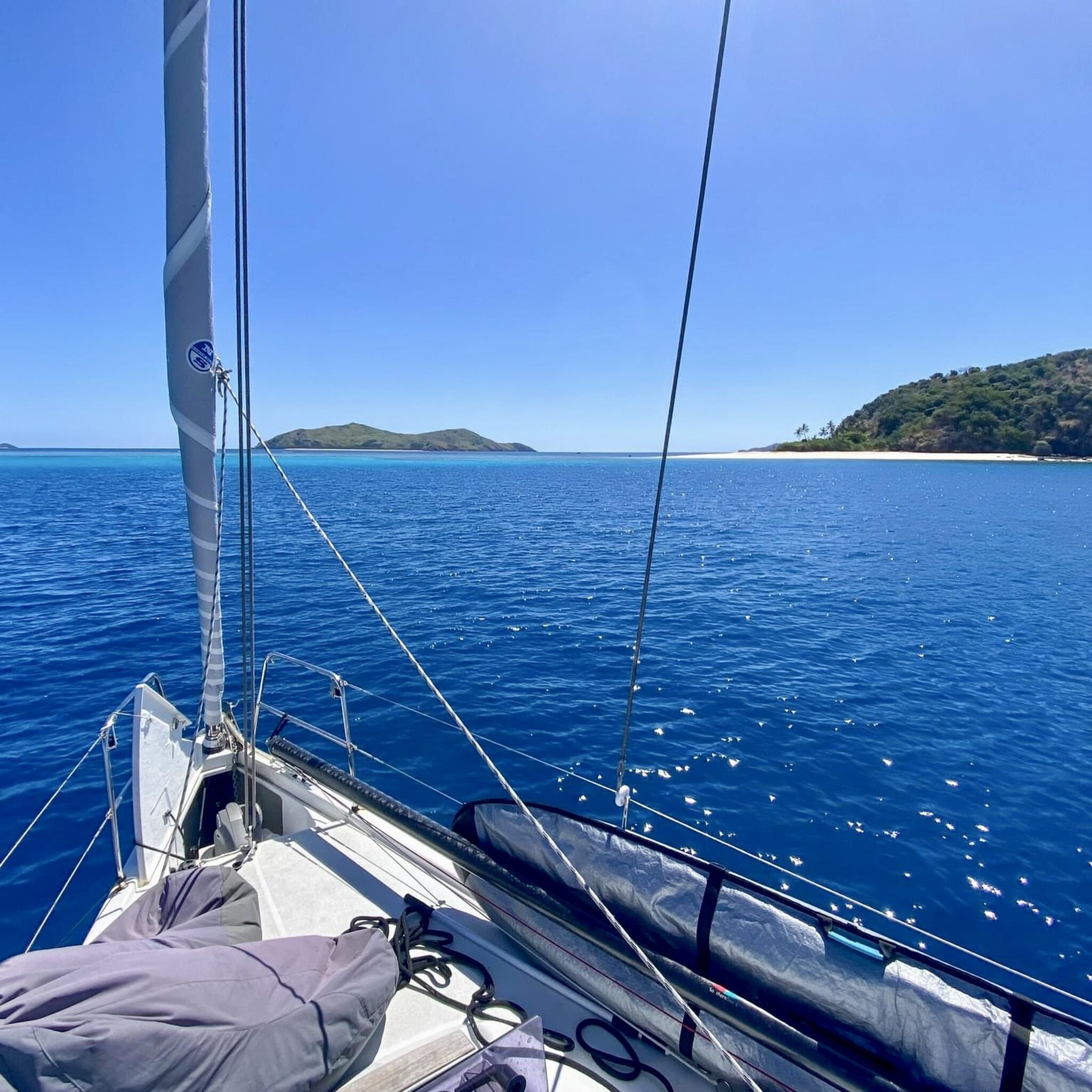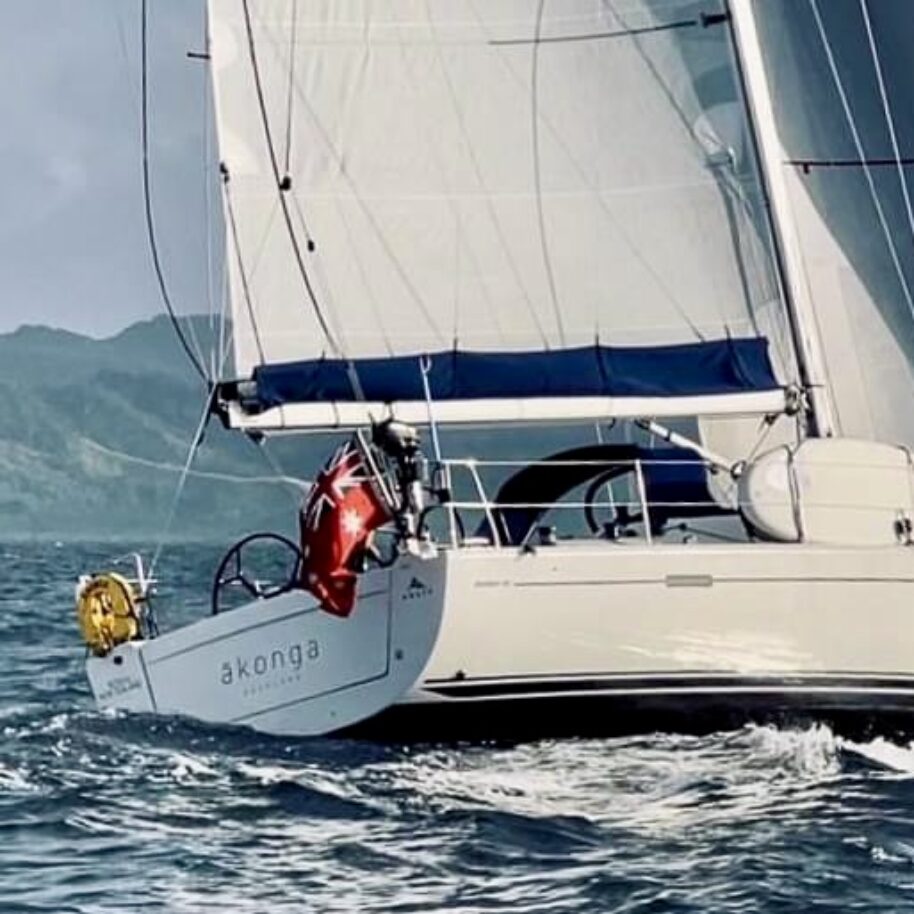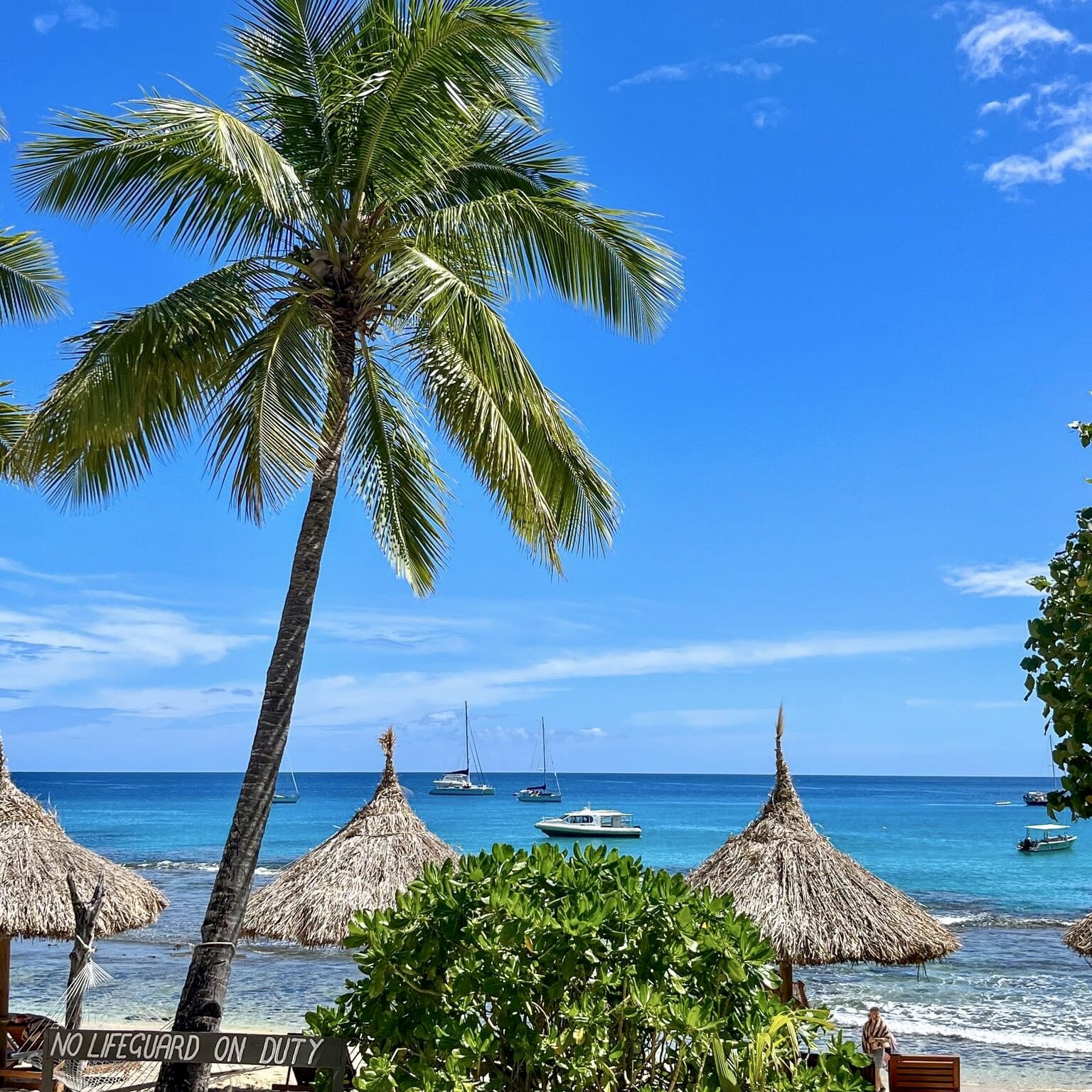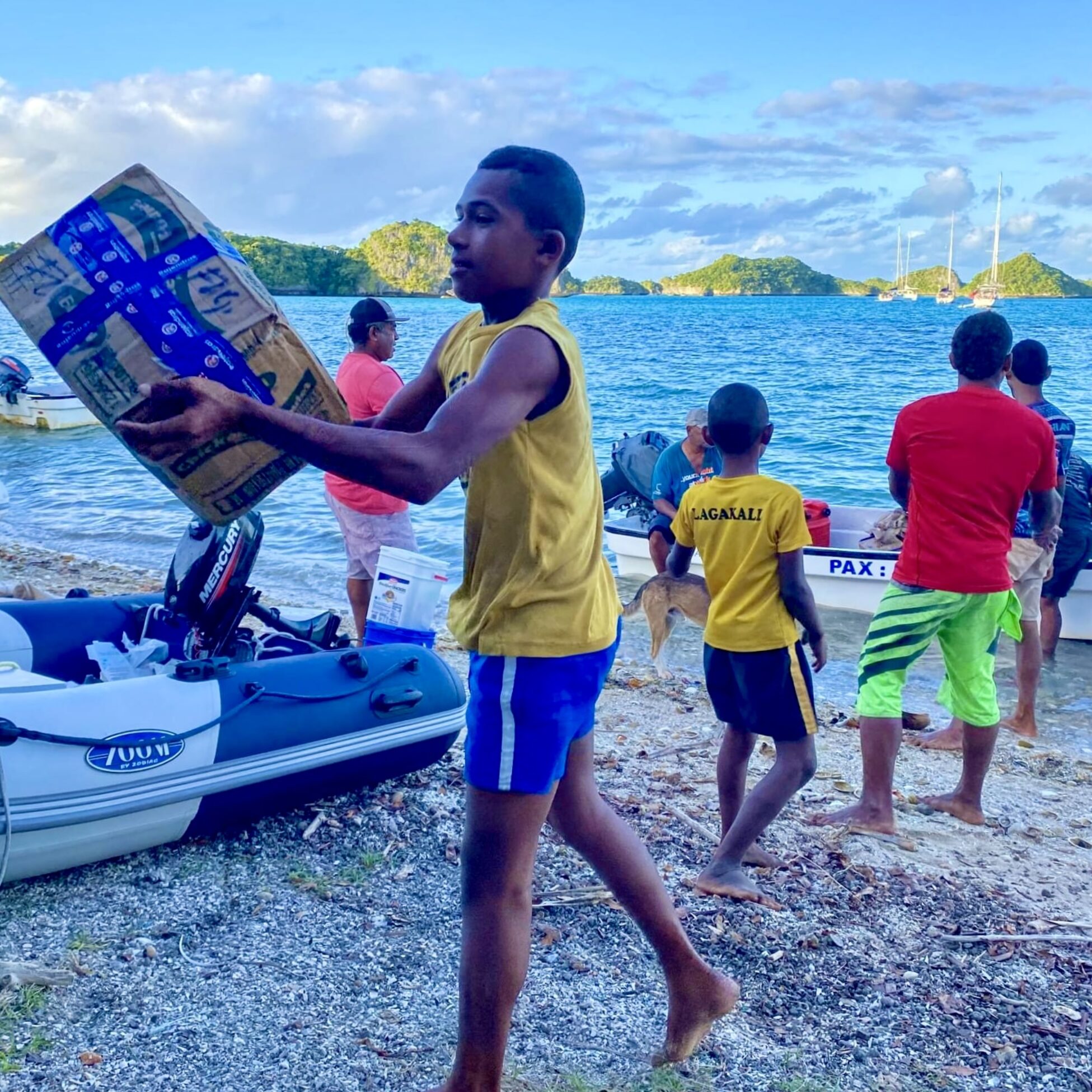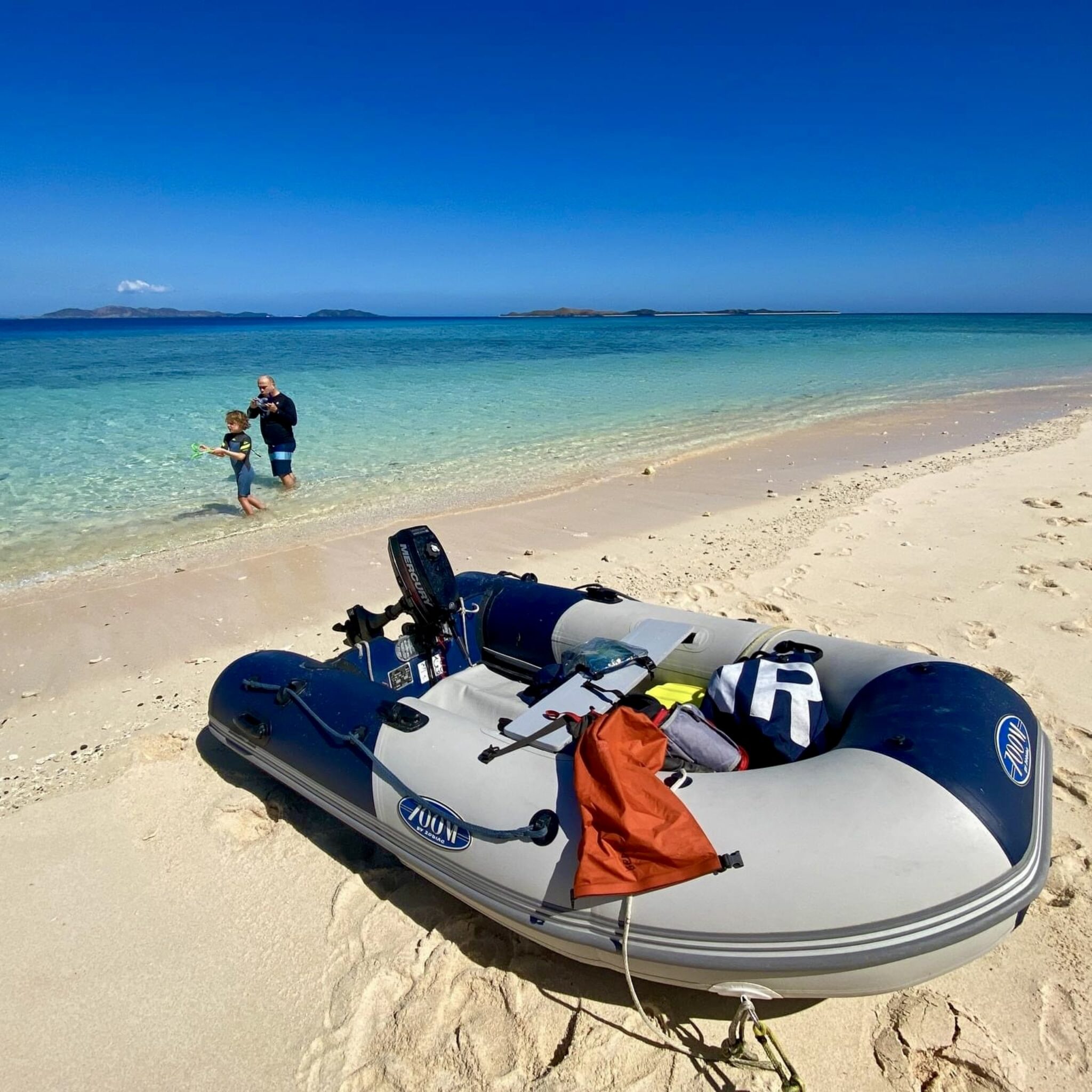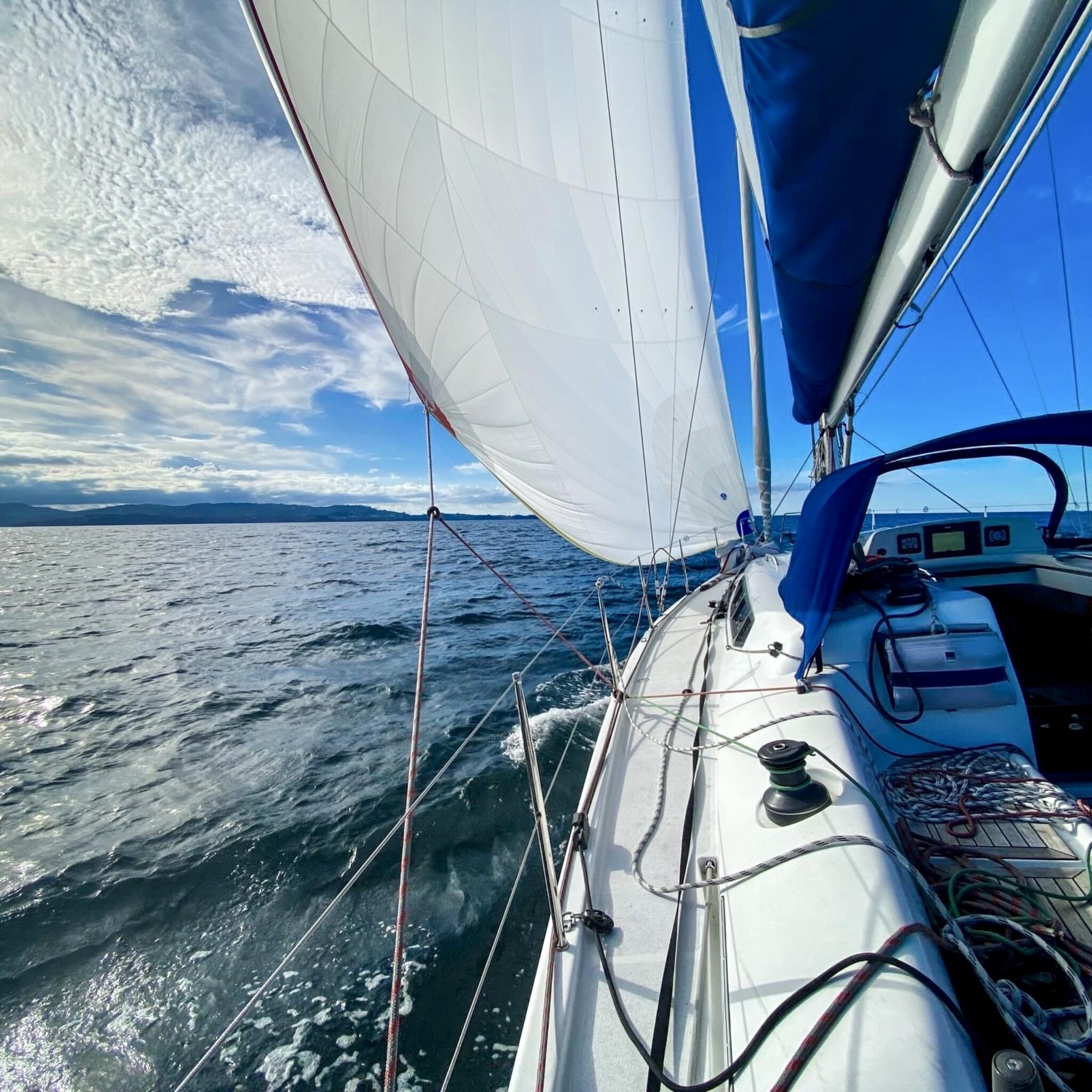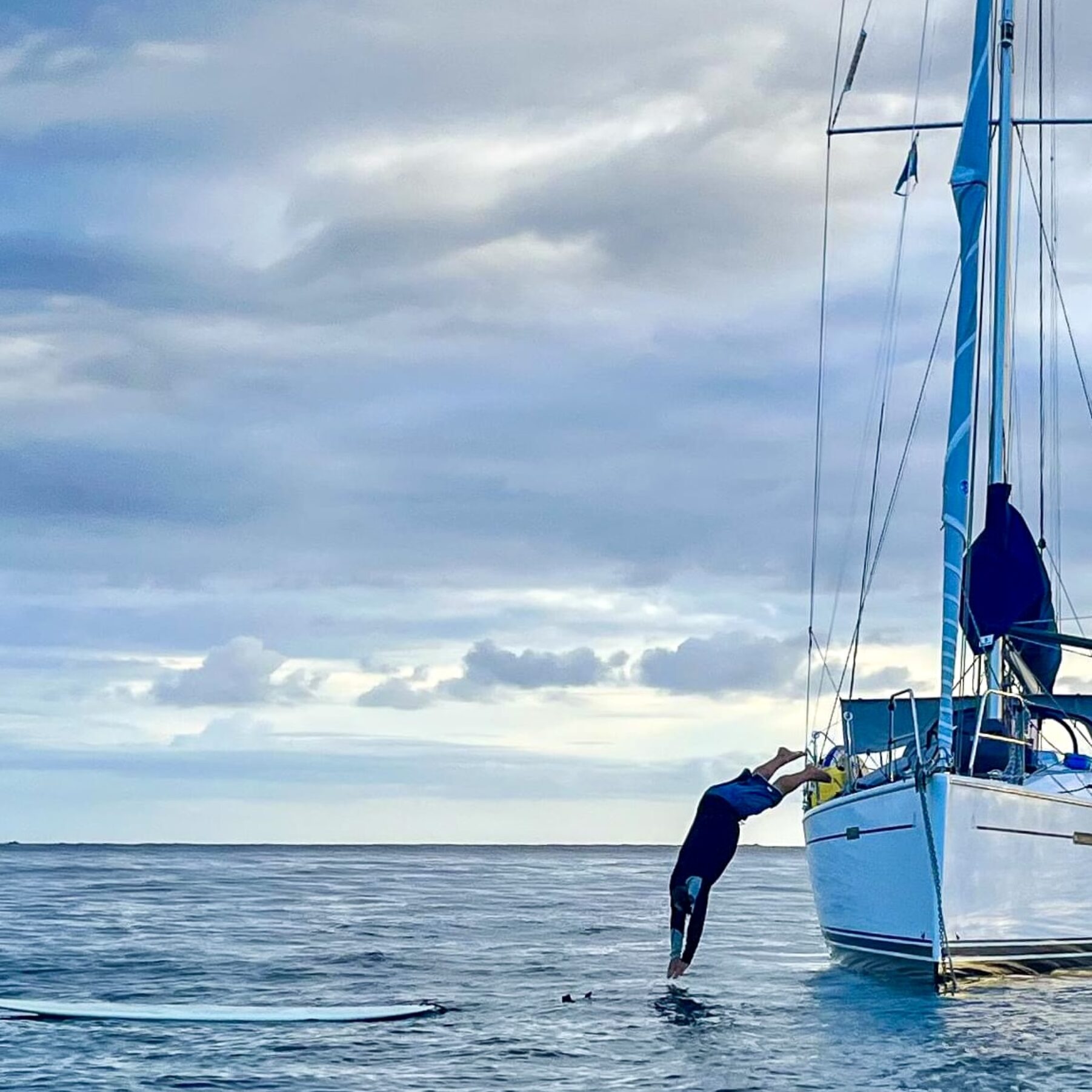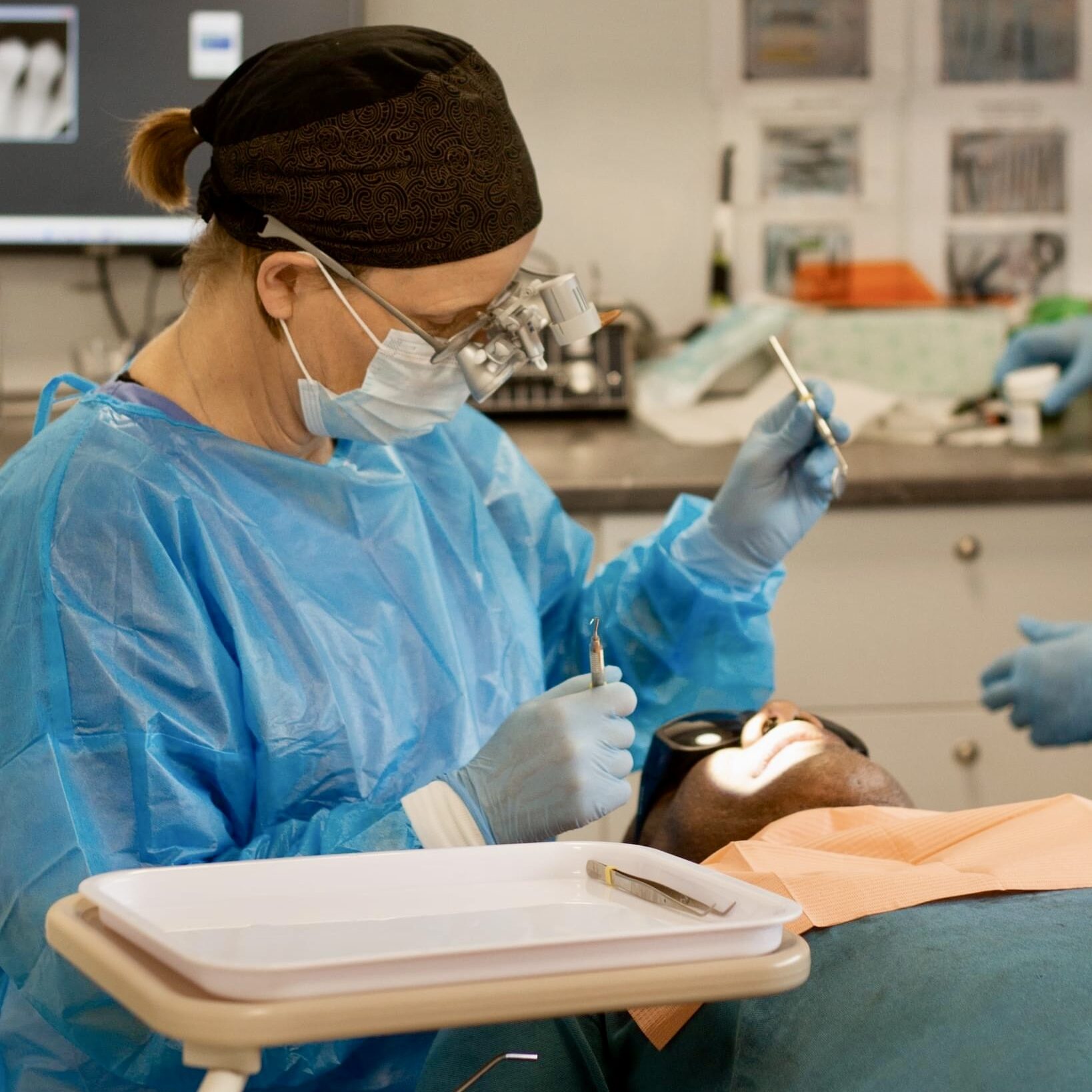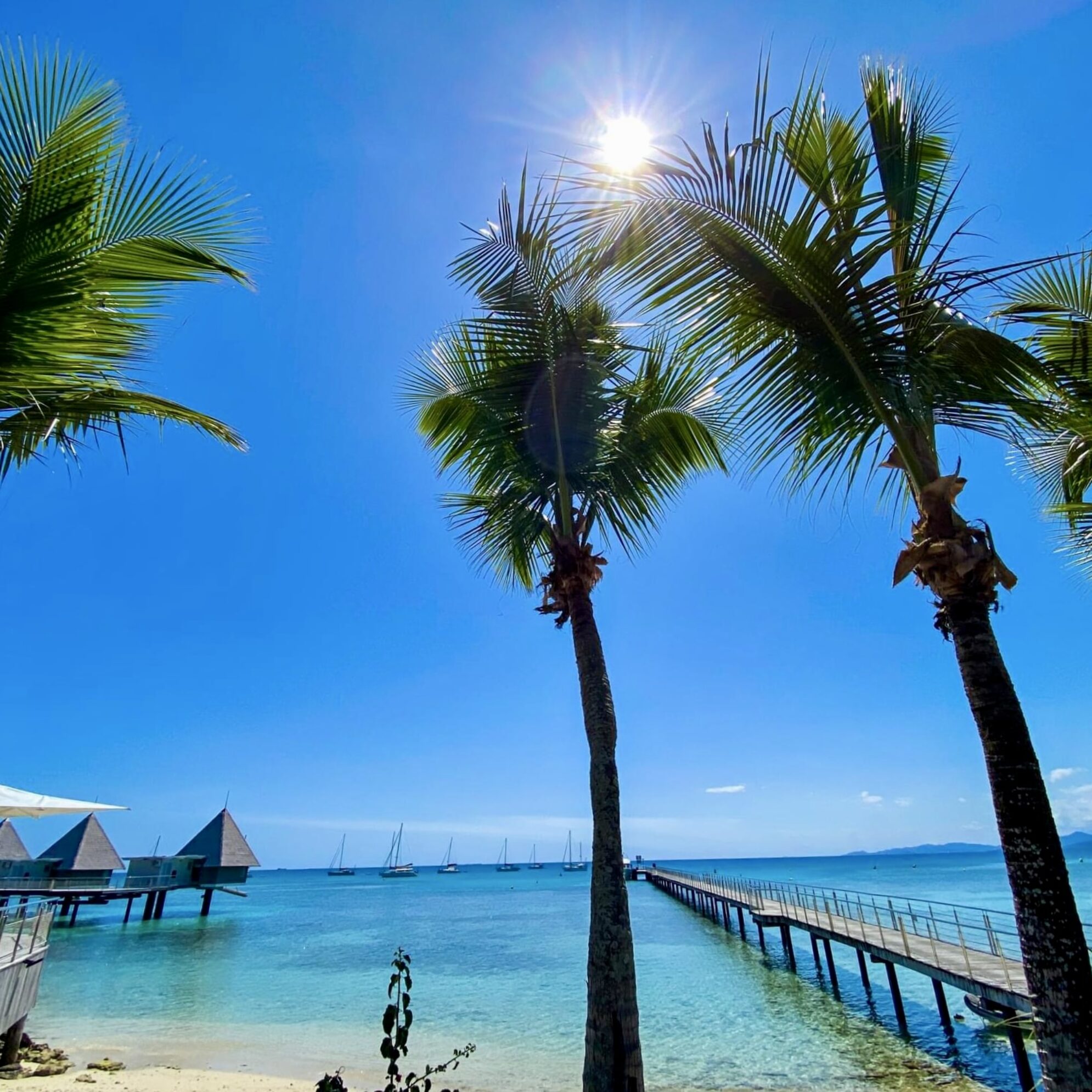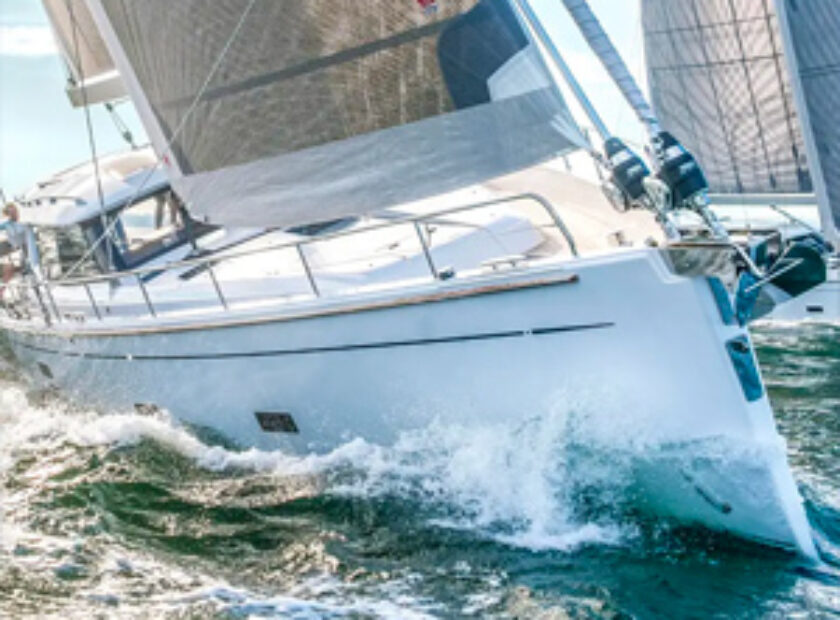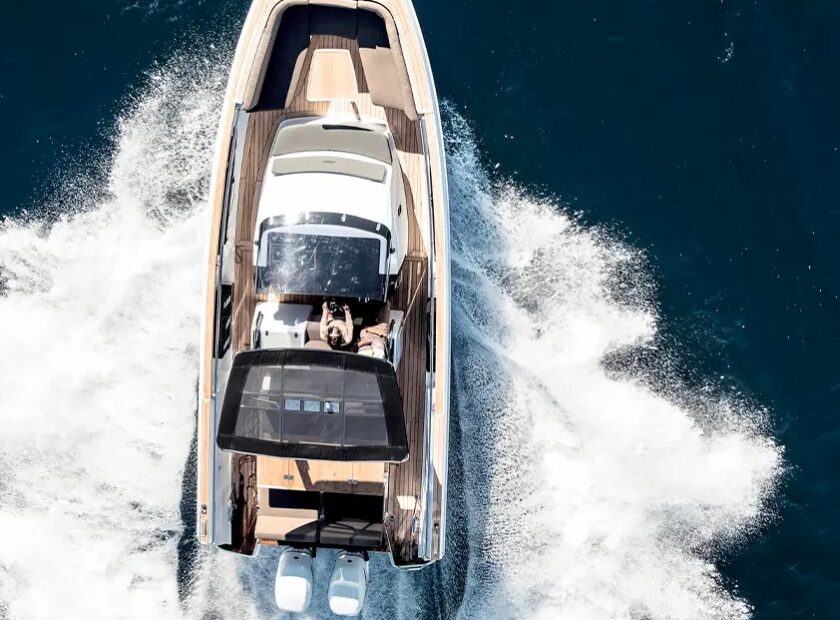The Dehler 41 seamlessly combines all-round sailing performance with functional elegance and the ability to shift easily from racing to cruising modes.
Originally from Sydney, now based in New Zealand with his family, Nick Roberts has clocked nearly 7,000 nautical miles cruising among some the South Pacific’s most unspoilt islands. During his time out on the vastness of the world’s largest ocean he’s gained a deep appreciation of the virtues of Akonga, his Dehler 41.
Akonga means student, learner and disciple in Maori and according to Nick that’s because sailing teaches you about life.
Windshift: Nick thanks for talking with Windshift. What configuration is your Dehler 41?
Nick: Mine is a three cabin, with a double cabin aft on the starboard side and large storage space on the port side. It’s perfect for cruising, a huge garage for toys and gear including a longboard and inflatable SUP which is great for exploring reefs, snorkelling from, going ashore, visiting mates on other boats while at the same time being able to easily fold-up and store on passages.
WS: What have been some of the cruising highlights?
N: I bought the boat to enjoy the Haruki Gulf and the Bay of Islands which I rate as cruising jewels comparable to anywhere in the world. But I also aspired to make my way into the Pacific on my own yacht. When I turned 50 I had the opportunity to have a year off and took the boat to Fiji and spent five months there, on the outer northern, eastern and western edges of the archipelago.
The most amazing cruising experience has been in the Lau Group (consisting of more than 60 islands, half of them uninhabited scattered across a vast expanse of sea in the eastern part of Fiji). Fulaga Island in the south of the Lau is incredibly remote, with a stunning reef system and the local people who are humble and extremely generous in sharing their island. You are on a speck in the middle of the Pacific with more than 200 miles to the nearest diesel and shops.
WS: What options have you installed to make cruising life a bit easier?
N: My main has a fourth reefing point it and because it’s single line reefing I’m very comfortable reefing without leaving the cockpit. I replaced the original batteries with lithium ones and bought a portable water-maker. I also have a large but quite elegant boom tent and the storm jib, number three headsail and code zero are all on furlers so I can easily roll them in or out.
I also have a bit of flexible solar, a board that I can move around to face the sun. I borrowed a small Honda generator for extra power straight to the battery when required.
WS: What’s the most useful sail in your wardrobe?
N: I just love the code zero which a North’s one. I can sail at 40 degrees (TWA) in six knots of breeze doing 7 knots boat speed. It is also capable of holding 130 degrees in 25 knots, doing 13s and 12s. You can easily roll it up hand over hand.
WS: Is that the most enjoyable point of sail?
N: The boat is incredibly good upwind in big breeze. It’s dry and the big rudder hangs on giving you plenty of purchase. After that it’s power-reaching, 90 degrees with the code zero up is easy miles.
WS: What were the most challenging conditions you encountered during the trip?
N: Coming home to New Zealand from New Caledonia there was a low that just clipped us near Norfolk Island and we got hammered by 35 knots. The sea-state was terrible but the boat was fine. I’ve been in 35 knots a lot of times now and the boat is easy to reef and steers well on autohelm.
WS: What do you enjoy most about the cruising lifestyle?
N: I love meeting people, I love the social element of it but I also love the process, strangely especially the planning. If you are going to cruise to remote places you have to be well-prepared and I actually like have pages of spreadsheets and lists, which I love ticking things off on. So the whole journey starts for me when I create a spreadsheet.
I enjoy the fact that I can sustain myself for months remotely because the boat’s organised and you’re well prepared. Every bit of money, every bit of time you’ve put into it, it just gives back to you in reliability.
WS: You weren’t completely off the grid though? You still had comms?
N: We used Iridium GO (the trip was just prior to Starlink being available). That meant I had weather GRIB files and I’d download them to make sure where I was going to be for the next four or five days was going to be all right. Then you might go to a mate’s boat and compare notes on when you might move.
WS: You unfortunately sometimes hear of locals stealing gear from yachts. What’s been your experience on your travels? What would be your advice to visiting yachts?
N: You have to approach it from their point of view: someone is arriving and pitching a tent in your backyard. You’d like them to come and say ‘Hi I’m from Australia my name is Nick, this is my boat, my family. We’d like to ask your permission to enjoy your beautiful beach and island’. They respond to that really well. They welcome you into their homes, they cook for you, share their produce whatever it is. You do that as soon as you get somewhere.
WS: Some people bring school books or radio parts, batteries etc for barter or gifts. What would you recommend?
N: We had a lot of fishing gear; hooks and stuff. Reading and sunglasses, books, pens and pencils for the kids’ schools, often they don’t have enough.
WS: What is the next destination you are thinking of loading into the chart plotter?
N: My wife Penelope is a dentist who regularly works on the YWAM (Youth With A Mission) ship Koha. (The 49 metre NZ based Koha is specially set-up to carry people and cargo to remote Fijian island communities. Custom built shipping containers, on the ship’s deck, serve as dental, medical, surgical, pharmaceutical, or classroom facilities. It is run by the charity YWAM Ships Aotearoa.) I’ve done it too over the past couple of years.
We’d really like to dedicate six months in Fiji, take the yacht up as our base and do a lot more work on the ship. As part of that I’m really keen to get to Minerva Reef, and then onto Tonga before heading back to Fiji. (Minerva Reef(s) is described as a natural wonder located 800nm from New Zealand, 250nm from Tonga, and 450nm from Fiji. Made up of the South atoll and the North atoll, during high tide both reefs disappear giving the illusion of being anchored in the middle of the Pacific).
Ed’s note: Nick is also a highly experienced racing sailor who’s contemplating a two-handed campaign for this year’s Rolex Sydney Hobart, we will keep you updated.
More info on the Dehler brand: windcraftyachts.com/dehler
More on YWAM Ships Aotearoa: ywamshipsaotearoa.org.nz



